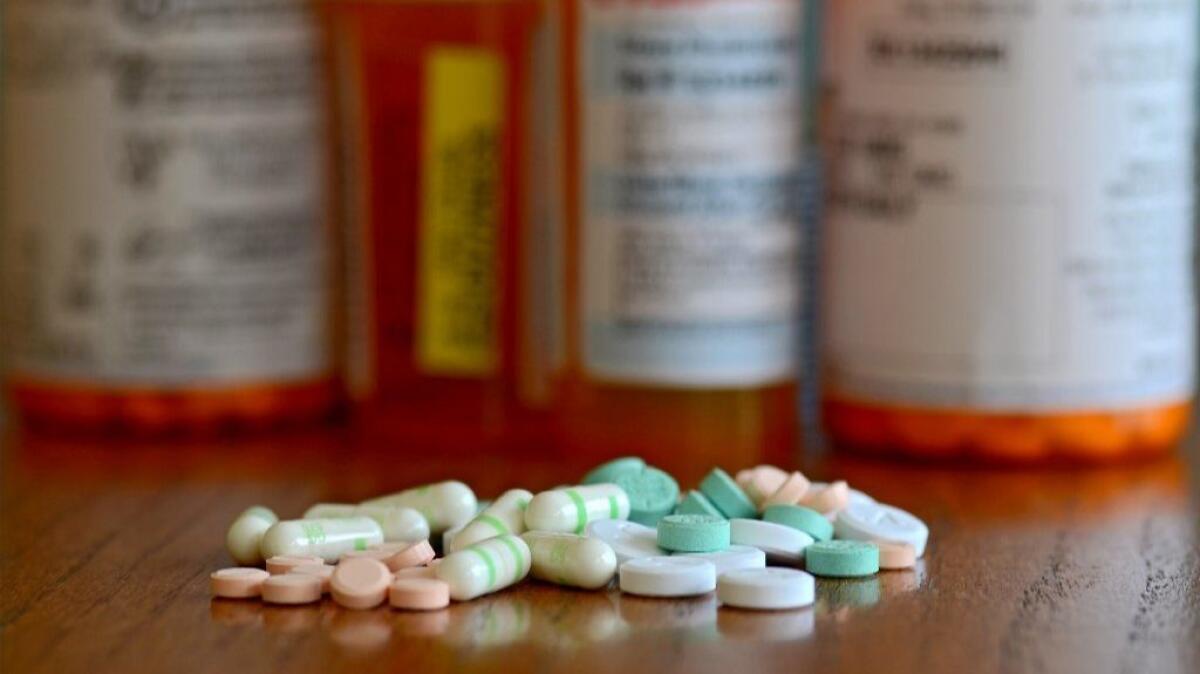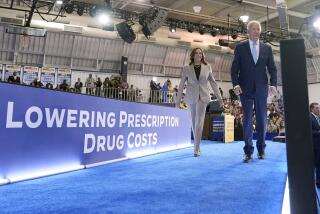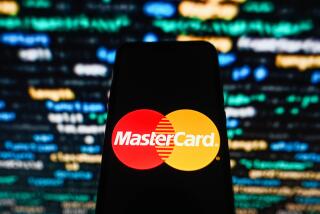Column: If Trump wanted, he could take steps to lower soaring drug prices

After last year’s election, Donald Trump declared his determination “to bring down drug prices.” As president, he’s now reportedly cooking up an executive order aimed at cutting regulations for drug companies, which probably won’t do much to lower prices but should please industry execs.
It’s worth asking, though: If Trump really wanted to bring down drug prices, could he?
The answer, surprisingly, is yes.
Or perhaps. It depends in part on how you interpret a 1980 patent law.
“Yes, I would say that the government has cards to play,” said Peter Lee, a UC Davis law professor who specializes in patent issues. “But you can be sure the biopharmaceutical industry would be opposed to any such intervention in the marketplace.”
I wrote last week that it’s time to expand federal funding to universities for research into promising new drugs, rather than rely primarily on profit-hungry pharmaceutical companies that price their pills at whatever the market will bear.
I cited the example of Frederick Banting, a Canadian scientist who discovered insulin in the early 20th century and subsequently sold the patent to the University of Toronto for just $3. The university, in turn, made the patent available to drug companies royalty-free to facilitate its widespread availability.
I also pointed to the the hepatitis C drug Sovaldi, which Northern California’s Gilead Sciences introduced in 2013 at a price of $1,000 a pill. Gilead didn’t even do the bulk of research to develop the drug. That was done by an outfit called Pharmasset, which Gilead purchased in 2012.
And Pharmasset, like most drugmakers, was standing on the shoulders of university scientists who do much of the basic research that goes into pharmaceutical products.
That brings us back to where we started. How much clout does the federal government have to bring down drug prices — particularly in light of the billions of taxpayer dollars spent annually on basic research that serves as the foundation of the pharmaceutical industry’s riches?
Legislation known as the Bayh-Dole Act was adopted in 1980 to address just this issue. The idea behind the act was to make it easier for public-sector research to translate into private-sector products by simplifying the licensing of patents. Taxpayers thus would get more bang for their research bucks.
But here’s where things get interesting. Lurking within Bayh-Dole is language that empowers the government to “march in” and award patents to competing firms if “reasonable terms are not being met” by the company licensing the patent.
The general idea is that if a private-sector patent holder isn’t making good use of publicly funded research, perhaps by not bringing a product to market quickly enough, the government can kick-start competition by handing the patent to somebody else.
Some have argued that the “reasonable terms” provision, because of its vagueness, also could be used by federal officials to demand lower prices for insanely expensive prescription meds — which is basically what Trump promised to do before and after the election.
The authors of the act, former Sens. Birch Bayh and Robert Dole, said when that idea was first floated decades ago that this was never their intent. But the ambiguity of the law remains.
Craig Garthwaite, a health economist at Northwestern University, told me that even if federal authorities didn’t seek price caps, they could use Bayh-Dole to pressure drug companies to lower prices. The implicit threat would be sharing exclusive patents with others if the drugmaker didn’t play ball.
“That seems like a viable enough theory,” Garthwaite said, although he added that any such crackdown would send a chill through the industry and could hamper investment in new treatments.
Mohan Rao, managing director of the consulting firm Epsilon Economics and chief financial officer of the Georgia biotech company Expression Therapeutics, said the government probably could influence drug pricing by merely suggesting use of its Bayh-Dole march-in power.
“The federal government has never actually marched in before,” he said. “People would pay attention.”
Rao knows this terrain well. His company, which is developing a gene therapy for hemophilia, relied on Bayh-Dole to obtain basic-research patents from Emory University. “The basic science,” he readily concedes, “was government-funded.”
As such, Expression Therapeutics could be targeted under Bayh-Dole if its market activities were deemed by officials to not be “reasonable.”
Rao said he’s not worried. His company’s goal, he said, is to offer its still-in-the-works hemophilia therapy at a lower price than other treatments.
But there’s another federal patent law he might need to keep an eye on. Known as U.S. Code Section 1498 under Title 28, this little-known law gives the government power to infringe a company’s patents in the name of promoting public good.
Thus, federal officials could seize the patent of an absurdly high-priced medicine and make their own generic version, or license the patent to a manufacturer of generic meds. The government’s only obligation to the original patent holder would be “reasonable compensation” for the infringement.
This isn’t theoretical. There have been prior patent grabs by the feds, but no patent for a prescription drug has been seized since the early 1970s. That’s when the Pentagon used the law to acquire low-cost meds for troops serving in Vietnam.
Since that time, the pharmaceutical industry has lobbied aggressively to keep that from ever happening again.
One other possibility Trump could consider: buyouts.
“My preferred solution is that the federal government selectively buy out drug patents at time of FDA drug approval,” said Joel Hay, a professor of pharmaceutical economics at USC. The government then would license the patent to manufacturers and have a say over pricing.
Hay said this probably would reduce how much the government spends on prescription meds — a cost that now runs Medicare and Medicaid combined over $100 billion annually.
“And unlike drug price controls, this will preserve innovation, not wreck it,” Hay said.
As UC Davis’ Lee put it, the government has cards to play. It just depends on whether the president has the political will to do it.
Experts I spoke with said this would be highly unlikely under the Trump administration.
A Sanders administration, on the other hand.…
David Lazarus’ column runs Tuesdays and Fridays. He also can be seen daily on KTLA-TV Channel 5 and followed on Twitter @Davidlaz. Send your tips or feedback to david.lazarus@latimes.com.
MORE FROM DAVID LAZARUS
Yes, we can lower sky-high drug prices — other countries have done it
To thwart the trolls, social-media sites should require users’ real names
Our national nightmare: Must we give in to shrinking toilet-paper rolls?
More to Read
Inside the business of entertainment
The Wide Shot brings you news, analysis and insights on everything from streaming wars to production — and what it all means for the future.
You may occasionally receive promotional content from the Los Angeles Times.











